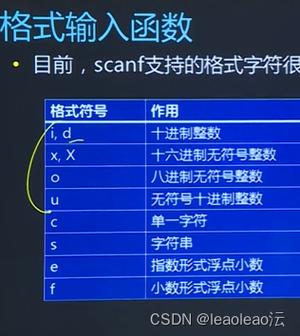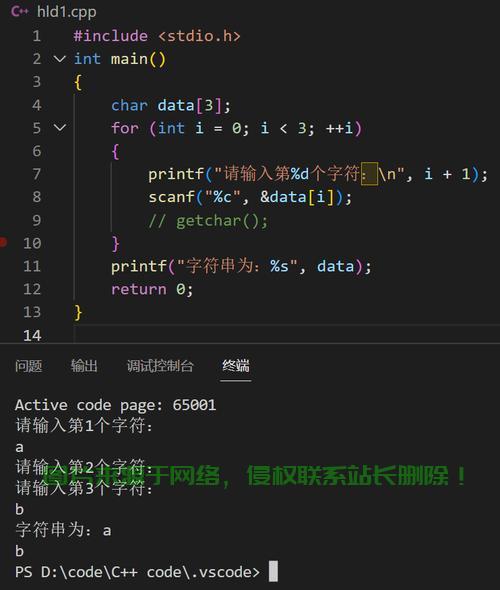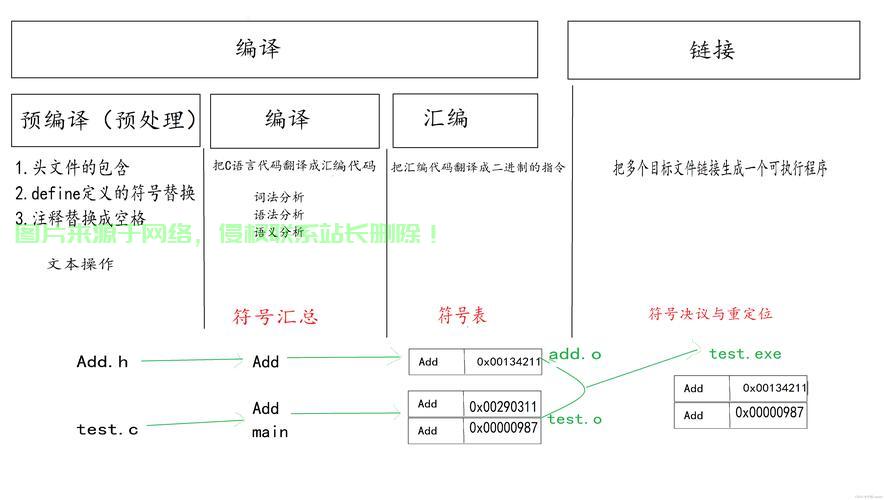Linux下C语言格式化输入输出详解,如何在Linux下高效使用C语言的格式化输入输出?,如何在Linux下用C语言实现高效格式化输入输出?
** ,在Linux环境下,C语言的格式化输入输出(如printf、scanf及其变体)是开发中的核心功能,通过格式字符串灵活控制数据类型和显示方式,高效使用时需注意: ,1. **格式说明符匹配**:确保%d、%s等与变量类型严格对应,避免未定义行为; ,2. **缓冲区管理**:输出时使用fflush强制刷新缓冲区,输入时结合fgets和sscanf替代scanf防止溢出; ,3. **错误处理**:检查printf/scanf返回值以确认操作成功; ,4. **高级特性**:利用%*.*f等动态宽度/精度控制,或%m(GNU扩展)自动分配内存,文件I/O中优先使用fprintf和fscanf,并注意多线程安全,掌握这些技巧可提升代码的健壮性和性能。
本文全面剖析Linux系统中C语言的格式化输入输出操作,深入讲解printf()和scanf()等核心函数的使用方法与最佳实践,作为系统级编程的基石,格式化I/O不仅影响程序的数据处理能力,更直接关系到系统安全性和稳定性。
格式化输出函数深度解析
printf函数:标准输出核心工具
printf是C语言中最基础的格式化输出函数,其函数原型为:
#include <stdio.h> int printf(const char *format, ...);
核心特性详解
- 格式化字符串:包含普通文本和格式说明符(如
%d、%f等)的字符串模板 - 可变参数机制:根据格式说明符自动匹配后续参数类型
- 返回值意义:成功时返回输出字符数(不含终止符),错误时返回负值
完整格式说明符参考表
| 格式符 | 数据类型 | 说明 | 示例输出 | 特殊用法 |
|---|---|---|---|---|
%d |
int | 十进制有符号整数 | -42 | %+d显示正负号 |
%u |
unsigned int | 十进制无符号整数 | 42 | %5u指定宽度 |
%f |
float/double | 浮点数 | 141593 | %.2f保留两位小数 |
%e |
float/double | 科学计数法表示 | 141593e+00 | %E使用大写E |
%g |
float/double | 自动选择%f或%e更短形式 |
14159 | %.3g控制有效数字 |
%c |
char | 单个字符 | 'A' | %*c跳过字符 |
%s |
char* | 字符串 | "Linux" | %.5s限制输出长度 |
%x |
unsigned int | 十六进制小写 | 2a | %#x添加0x前缀 |
%X |
unsigned int | 十六进制大写 | 2A | %08X前导零填充 |
%o |
unsigned int | 八进制 | 52 | %#o添加前导0 |
%p |
void* | 指针地址 | 0x7ffd42a3b4c0 | 自动添加0x前缀 |
| 百分号字符本身 | 无需对应参数 | |||
%a |
float/double | 十六进制浮点数 | -0x1.921fb6p+1 | C99新增 |
%n |
int* | 记录已输出字符数 | 需谨慎使用 |
高级格式化控制技巧
动态格式控制
int width = 8;
int precision = 3;
double value = 3.1415926;
printf("Value: %*.*f\n", width, precision, value); // 输出: Value: 3.142
本地化千位分隔符
#include <locale.h>
setlocale(LC_NUMERIC, ""); // 启用本地化设置
printf("大额数字: %'d\n", 1000000); // 可能输出: 1,000,000
安全输出实践
缓冲区溢出防护
char buf[32];
int n = snprintf(buf, sizeof(buf), "格式化字符串: %d", large_value);
if (n >= sizeof(buf)) {
// 处理截断情况
buf[sizeof(buf)-1] = '格式化输入函数全面指南
';
fprintf(stderr, "警告: 输出被截断\n");
}
scanf函数家族的安全使用
基础函数原型
#include <stdio.h> int scanf(const char *format, ...); int fscanf(FILE *stream, const char *format, ...); int sscanf(const char *str, const char *format, ...);
关键注意事项
地址传递&:必须使用缓冲区限制操作符获取变量地址(字符串数组除外)%255s:字符串输入必须指定最大长度(如返回值检查)- 输入残留:必须验证成功匹配的参数数量
增强型输入处理框架
:注意处理输入缓冲区中的残留字符
#include <stdio.h>
#include <stdlib.h>
#define SAFE_INPUT(ptr, type, prompt, format) \
do { \
printf(prompt); \
while (scanf(format, ptr) != 1) { \
printf("输入无效,请重新输入: "); \
while (getchar() != '\n'); /* 清空输入缓冲区 */ \
} \
} while(0)
int main() {
int age;
double salary;
char name[256];
SAFE_INPUT(&age, int, "请输入年龄: ", "%d");
SAFE_INPUT(&salary, double, "请输入月薪: ", "%lf");
SAFE_INPUT(name, char*, "请输入姓名: ", "%255s");
printf("\n员工信息汇总:\n");
printf(" 姓名: %s\n", name);
printf(" 年龄: %d岁\n", age);
printf(" 月薪: %.2f元\n", salary);
return 0;
}
高级应用场景
日志系统实现
#include <stdio.h>
#include <time.h>
#include <stdarg.h>
#include <string.h>
#include <sys/stat.h>
void log_message(const char *filename, const char *func,
int line, const char *format, ...) {
// 确保日志目录存在
mkdir("logs", 0755);
char fullpath[256];
snprintf(fullpath, sizeof(fullpath), "logs/%s", filename);
FILE *logfile = fopen(fullpath, "a");
if (!logfile) return;
time_t now = time(NULL);
struct tm *tm = localtime(&now);
// 写入时间戳和位置信息
fprintf(logfile, "[%04d-%02d-%02d %02d:%02d:%02d][%s:%d] ",
tm->tm_year+1900, tm->tm_mon+1, tm->tm_mday,
tm->tm_hour, tm->tm_min, tm->tm_sec,
func, line);
// 写入实际日志内容
va_list args;
va_start(args, format);
vfprintf(logfile, format, args);
va_end(args);
fputc('\n', logfile);
fclose(logfile);
}
#define LOG(...) log_message(__FILE__, __func__, __LINE__, __VA_ARGS__)
int main() {
LOG("系统启动,版本: %s", "1.0.0");
LOG("检测到 %d 个CPU核心", 8);
LOG("内存总量: %.2f GB", 15.8);
return 0;
}
配置文件解析器
#include <stdio.h>
#include <stdlib.h>
#include <string.h>
#include <ctype.h>
#define MAX_LINE 1024
#define MAX_KEY 64
#define MAX_VALUE 256
typedef struct {
char key[MAX_KEY];
char value[MAX_VALUE];
} ConfigItem;
ConfigItem* parse_config(const char *filename, int *count) {
FILE *fp = fopen(filename, "r");
if (!fp) return NULL;
ConfigItem *items = NULL;
char line[MAX_LINE];
*count = 0;
while (fgets(line, sizeof(line), fp)) {
// 去除行尾换行符
line[strcspn(line, "\n")] = '性能优化与安全实践
';
// 跳过注释和空行
if (line[0] == '#' || line[0] == 'I/O性能优化策略
') continue;
// 分割键值对
char *delim = strchr(line, '=');
if (!delim) continue;
*delim = '缓冲机制优化';
char *key = line;
char *value = delim + 1;
// 去除两端空白
while (isspace(*key)) key++;
while (isspace(*(key + strlen(key) - 1)))
*(key + strlen(key) - 1) = 'setvbuf(stdout, NULL, _IOFBF, 8192); // 设置8KB缓冲区
';
while (isspace(*value)) value++;
while (isspace(*(value + strlen(value) - 1)))
*(value + strlen(value) - 1) = '批量输出减少系统调用';
// 分配内存并存储配置项
items = realloc(items, (*count + 1) * sizeof(ConfigItem));
if (!items) break;
strncpy(items[*count].key, key, MAX_KEY-1);
strncpy(items[*count].value, value, MAX_VALUE-1);
items[*count].key[MAX_KEY-1] = '// 低效方式
for (int i = 0; i < 100; i++) {
printf("%d\n", i);
}
// 高效方式
char buffer[4096];
int offset = 0;
for (int i = 0; i < 100; i++) {
offset += snprintf(buffer + offset, sizeof(buffer) - offset,
"%d\n", i);
}
fwrite(buffer, 1, offset, stdout);';
items[*count].value[MAX_VALUE-1] = '文件I/O最佳实践';
(*count)++;
}
fclose(fp);
return items;
}
int main() {
int count;
ConfigItem *config = parse_config("app.conf", &count);
if (!config) {
fprintf(stderr, "无法加载配置文件\n");
return 1;
}
printf("加载到 %d 个配置项:\n", count);
for (int i = 0; i < count; i++) {
printf("%2d. %-20s = %s\n",
i+1, config[i].key, config[i].value);
}
free(config);
return 0;
}
FILE *fp = fopen("data.bin", "wb");
if (fp) {
setvbuf(fp, NULL, _IOFBF, 16384); // 16KB缓冲区
// 批量写入操作
fclose(fp);
}
安全编程黄金法则
格式化字符串安全-
// 危险做法 printf(user_input); // 安全做法 printf("%s", user_input);输入长度验证 -
char username[32]; if (scanf("%31s", username) != 1) { // 处理输入错误 }防御性编程示例 -
int safe_printf(const char *format, ...) { va_list args; va_start(args, format); // 先计算需要多少空间 int needed = vsnprintf(NULL, 0, format, args); if (needed < 0) { va_end(args); return -1; } // 分配足够空间 char *buffer = malloc(needed + 1); if (!buffer) { va_end(args); return -1; } // 实际格式化 int written = vsnprintf(buffer, needed + 1, format, args); va_end(args); if (written < 0) { free(buffer); return -1; } // 输出到标准输出 fwrite(buffer, 1, written, stdout); free(buffer); return written; }跨平台兼容性处理
数据类型格式化差异
| long long | %lld | %I64d | 使用PRId64宏定义 |
| size_t | %zu | %Iu | 使用PRIuSIZE宏定义 |
| 指针 | %p | %p | 统一使用%p |
- 处理边界条件 :
- 减少I/O调用次数
- 合理设置缓冲区
- 避免频繁的小数据写入 :
- printf家族函数的内部实现 :
- 缓冲区管理策略
- 本地化支持机制 探索替代方案
-
性能优化关键点
进阶学习路径
深入理解可变参数机制#include <stdarg.h>
void debug_log(const char *format, ...) {
va_list args;
va_start(args, format);
vprintf(format, args);
va_end(args);
}
研究glibc源码实现
- :始终假设输入可能异常
- :特别检查格式化字符串的使用
- :构建边界测试用例
- :关注C语言标准的新特性(如C11的安全函数)
通过掌握这些格式化I/O的高级技术,您将能够构建出既安全又高效的Linux系统程序,格式化I/O作为C语言的核心特性,值得每位系统程序员深入研究和实践。
免责声明:我们致力于保护作者版权,注重分享,被刊用文章因无法核实真实出处,未能及时与作者取得联系,或有版权异议的,请联系管理员,我们会立即处理!
部分文章是来自自研大数据AI进行生成,内容摘自(百度百科,百度知道,头条百科,中国民法典,刑法,牛津词典,新华词典,汉语词典,国家院校,科普平台)等数据,内容仅供学习参考,不准确地方联系删除处理!
图片声明:本站部分配图来自人工智能系统AI生成,觅知网授权图片,PxHere摄影无版权图库和百度,360,搜狗等多加搜索引擎自动关键词搜索配图,如有侵权的图片,请第一时间联系我们,邮箱:ciyunidc@ciyunshuju.com。本站只作为美观性配图使用,无任何非法侵犯第三方意图,一切解释权归图片著作权方,本站不承担任何责任。如有恶意碰瓷者,必当奉陪到底严惩不贷!










